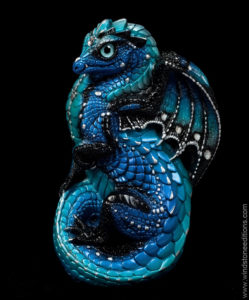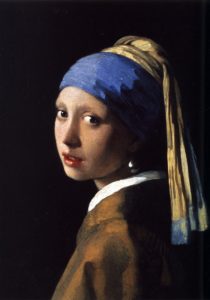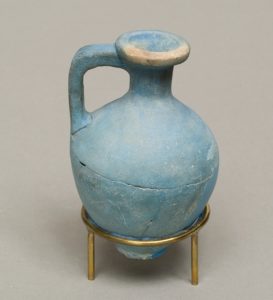Real Life Fantasy: A Brief History of Blue
by
The color blue has a pretty awesome place in human history. Many professional smartypantses [archaeologists, evolutionary biologists, historians, et al] believe humans evolved the ability to perceive the color, in a gradual shift from bichromatic to trichromatic vision. Last time we shared a bit of Real Life Fantasy, it was mentioned that there’s no word for the color blue in ancient languages (including Hebrew, Latin, and Greek, among others). The coolest evidence of this lack is in Homer’s version of The Odyssey, in which he describes the sea as “wine-red” rather than any shade of blue. And if our man Homer didn’t even have a word for blue, it seems safe to expect that none of his friends had the word either.
But luckily for Ironfist, and Cruxer, and Samila Sayeh, blue started showing up in Egyptian jewelry around 4,000 BCE, and in pigment (known now as “Egyptian Blue”) around 2,200 BCE.
Multiple shades of blue–including ultramarine and cobalt blue– were being used by artists centuries before the era of the Seven Satrapies. By the time Gollaïr and Solarch show up around 142 anno lucidonius, they have a full complement of blues from which to choose.

ANY way, this entry into RLF canon is an article from My Modern Met–the website for the Metropolitan Museum of Art in New York. There they talk about blue’s place in art history (which is to say, human history). It’s brief, and beautiful.



The Hebrew language does have words for the color blue: k’chol and t’chalet
Oh, for sure! We talked about the Hebrew word tekhelet (I assume t’chalet is an alternate spelling?) in a later RLF post: http://www.brentweeks.com/2019/05/real-life-fantasy-hemocyanin-and-murex-purple/
What I’ve found in my research (which I admit may be wrong here), ancient Hebrew is the version spoken from about 10th century BCE until 4th century CE. Biblical Hebrew–what eventually became modern Hebrew–was picked up centuries later, and includes tekhelet/t’chalet.
Thanks for bringing this back up. I love this little series of RLF posts 🙂
-CAPSLOCK